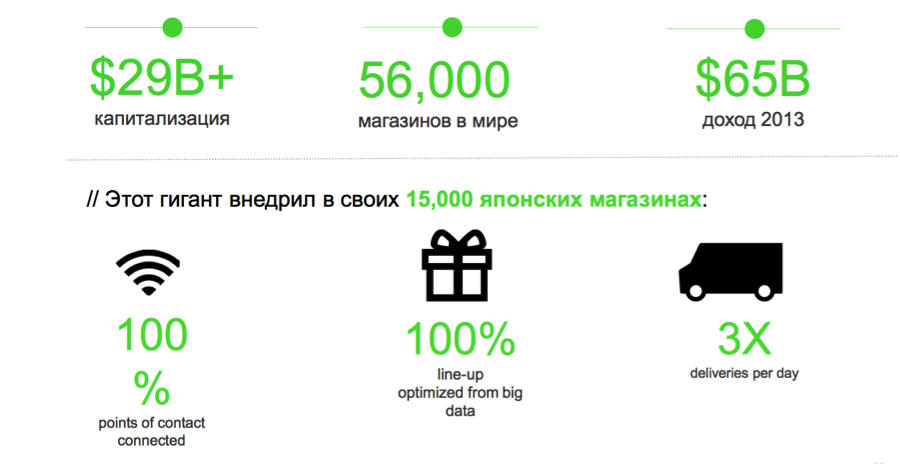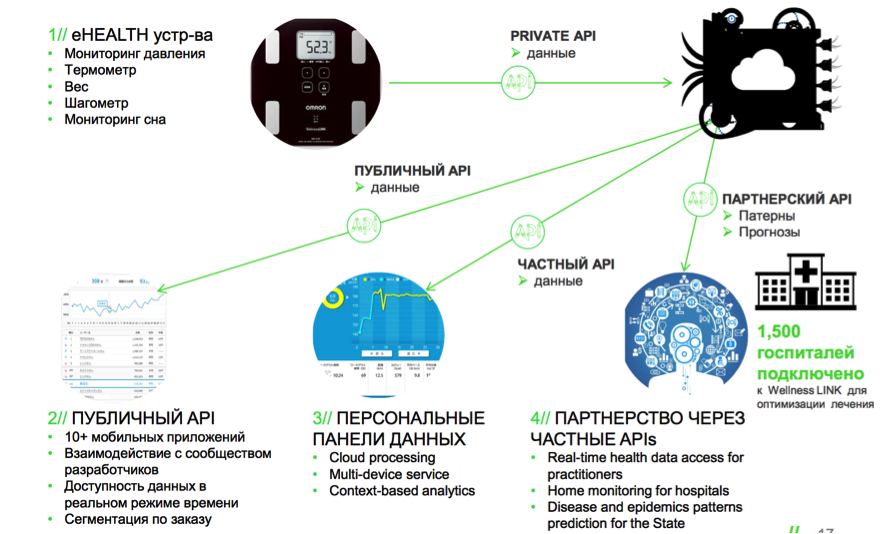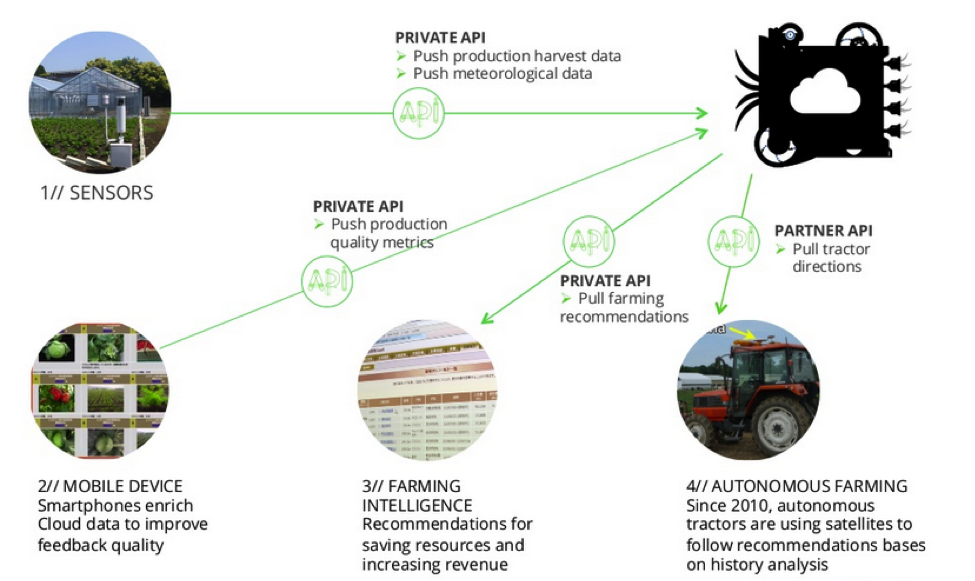Open Interfaces: The Business Strategy of the Future

On Habr it is hardly possible to meet someone who would not know what API is. The role of open interfaces has been growing rapidly in recent years, more and more services are opening their systems to third-party developers, which helps them increase their audience, and end-users get a more convenient way to solve their problems. But the API is not just a technical element for improving certain indicators. In the 21st century, API technologies have a huge impact on the development of a business, a product, and even supply chain management. That is why more and more companies from traditional sectors of the economy, initially not connected to the Internet, are beginning to implement the API approach in their business.
In the course of researchthat API technologies give to business, we studied the cases of 5 Japanese companies: they clearly demonstrate new trends in using private or partner IPAs to update business models and search for new sources of monetization. Today we want to share this interesting information with you.
Future
APIs, starting in the 90s, allowed developing applications for operating systems. Now the number of devices connected to the Internet is growing exponentially. Computers, tablets, smartphones, wearable gadgets, smart glasses are connected through the API. Soon we will see a rapid increase in the Internet connection of various household appliances, designer items, interior items, sports equipment, etc. These trends are known as the Internet of Things (IoT) or the Internet of Everything (IoE).
A large number of start-ups have already been created to work in these markets, which are trying to “find” sustainable business models. According to conservative forecasts by Ericsson, the number of devices connected to the Internet will grow from one billion in 2013 to 50 billion by 2020, and this figure will double every 5 years.

Open interfaces / platforms create a network effect, and the technology business actively uses these tools to build successful business models. For example, 30% of Twitter messages are generated through third-party connections to the company’s official API, the Netflix video streaming platform processes 14 billion requests daily via the API, and Amazon’s AWS cloud infrastructure earns $ 3.8 billion due to its open interfaces.

API approaches of traditional companies
Let's look at a few case studies of companies that have fundamentally updated their business models using technology APIs.
Seven eleven
7-Eleven, the operator of small supermarkets, experienced serious financial difficulties. As a result, it was bought by the Seven & I holding, which created on its basis a supermarket chain with an integrated and flexible cloud infrastructure. Now it allows the company to receive and analyze customer information from 15 thousand cash registers connected to the Internet. The assortment on the shelves of the store can change up to 3 times a day, based on Big Data analytics and customer behavior forecast. Currently, the holding has a capitalization of $ 29 billion, and revenue for 2013 amounted to about $ 65 billion and continues to grow steadily.

Omron
Omron, a manufacturer of medical devices for private clients, entered the e-health market in 2012, together with a telecom operator, providing a range of services, from visualizing information to users and ending with selling data to external developers. A set of services for external clients includes selling data for mobile developers, visualizing information, forecasting epidemics, and monitoring patient clinics. More than 1,500 medical institutions are already connected to the platform. The company's turnover growth through the provision of services in the B2B segment amounted to 30% in 2013, Omron aims to achieve a capitalization level of $ 130 million by 2015.

Cookpad
Cookpad, which began as a simple user-created recipe website, now sells customer preference analytics to food industry companies.
Fujitsu
The company launched a new service called AKISAI, which aggregates data from all over the country using sensors and cameras installed in fields and farms. As a result, data are collected on soil temperature, air humidity, or rainfall. AKISAI uses cloud technology to store and process data. As a result, based on historical data, the service can generate recommendations on the use of available resources and visualize the collected statistics.

By 2016, the number of farmer clients of the AKISAI platform, according to Fujitsu forecast, will be 200,000.
Honda
Honda was the first automaker to launch a navigation system back in 1983. In 2003, the company launched the InterNavi Floating Cars service, which connects a fleet of vehicles through the API to provide navigation services. At the moment, 2 million cars in Japan are connected to the service. Thanks to the internal API, all machines connected to InterNavi can send data about their location and speed, as well as request location information. As a result, Honda has already received an array of data describing a billion kilometers of track in Japan.
In addition, in Silicon Valley, the company opened the Innovation Lab, whose mission is to work with potential partners in the search for new applications of API technologies. As a result, two projects were developed. The first of them allows using the data collected through the API to predict the state on the roads of a certain region after a disaster there (earthquakes, floods, etc.). The second project is the organization of a special hackathon together with Evernote, during which developers can create various applications.
Like Apple, which has built an entire ecosystem of applications around the AppStore, Honda is creating a similar ecosystem around its Navy System. It is clear that in the future cars will be much more like smartphones: for them there will be special content platforms with applications that meet any possible needs of the car owner.

APIs have become new product / service channels and are used to provide services to customers, partners, the public and, of course, for interaction within the company. In order to understand the model for the successful development of this channel, you need to understand the key elements, the participants and the structure of the value chain in this channel. First of all, you need to answer the following questions:
- Who is the API provider?
- Who is the target audience and what is its size? What is her motivation to use the interface?
- What business assets will be delivered through the API? What information, services, products will be available through the API?
- What features or applications will be used through the interface?
- Who is the end user of API-based applications?
Answering these questions, we understand the elements of the value chain, which includes: business assets (information, services, products), an API that provides access to these assets, external developers (create applications based on the API), the applications themselves, end users of applications. For the API to succeed, chain members must benefit from the use of the channel and support the API economy.
An important condition for the success of the strategy of using the API in the company is the participation of an interdisciplinary team in creating the API, namely marketing experts, communities, product managers, evangelists, business experts who can help set the right business goals and project success criteria, as well as think over issues of promoting applications among end users and allocate additional resources, if necessary.
Risks and Prospects
API technologies have not only supporters, but also opponents, who point out the various risks of using an open approach. Key arguments include:
- incorrect use of content;
- possible overload of systems;
- security threats.
As for the first argument, the company that gives access to its API is pretty well protected from such risks, because it can control access to the interface. System overload, in general, is a good sign indicating business growth, and hackers cannot be insured against an attack without even having an API.
It is important to use startup methodology in developing new services / products (Lean Startup, Agile Development, Business Model Generation), as this will help to avoid premature investments and test the main hypotheses in the value chain. In addition, you need to move in stages and step by step cover different segments and applications, and not try to do everything at once.
API technologies can effectively solve the three tasks of any business: its development, product and service development, resource and supply management. That is why it can be argued that it is precisely the open approach that the future has, and many large companies understand this. In the markets of Europe and the USA, one can already see how such conservative players like banking organizations and telecom operators (Credit Agricole, Verizon, T Mobile, World Bank, Orange, etc.) begin to look towards open interfaces and develop prototypes of their own API platforms to gain new competitive advantages or even to counter disruptive innovations by active venture startups.
